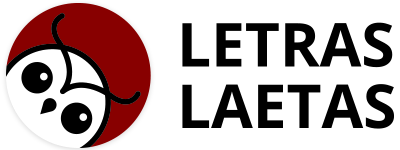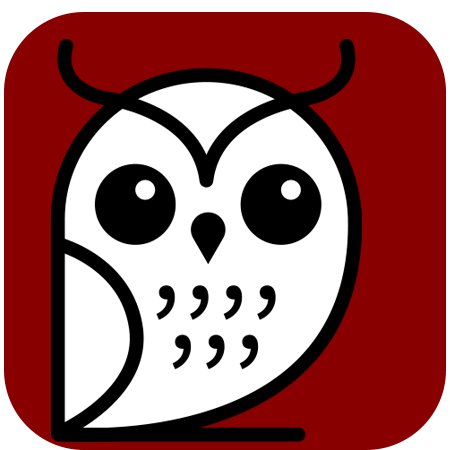If when you hear “accessible books” you think of a literary cheapie, stay and read on because you couldn’t be further from the truth. And the fact is that the term “accessible” has this connotation of affordable, which is only part of its semantics. Accessibility in this context has to do with the fact that a book, in any of its formats, can be consumed by both hegemonic people and those with disabilities.
I recently took the workshop Fundamentals of Accessible Book Publishing, given by Ana María Bermúdez, director of BookAlly, a company specializing in publishing accessibility. The experience was eye-opening, like turning on a light in a room you thought you knew well, only to discover details that were previously unnoticed. I realized that the publishing industry is not creating enough accessible books and that the barriers for people with disabilities are deeper than I imagined. At Letras Laetas we believe in the importance of accessibility, so we have set out to spread this information and raise awareness, not only among readers, but especially among publishers.
People with disabilities and accessibility
What does it mean to be a hegemonic person? It is someone who lives without disabilities and who, for example, can read a printed book without hindrance. For these people, reading is often a trivial, almost automatic act. However, millions of people with disabilities face barriers that prevent them from accessing books in traditional formats.
Although there are alternatives such as audiobooks, ebooks and video books -which we will discuss later-, none of them is a perfect solution. Their production presents challenges, as they tend to be more costly and, in many cases, are discarded by senior management because of the lack of an immediate return on investment.
The result of this lack of access is what is known as global book famine. Despite living in an era of digitization that has facilitated the mass production and distribution of content, we have not yet achieved equitable access to reading. In other words, not everyone can receive the same information under equal conditions: at the same time, with the same quality and at the same cost.
Book famine
The “book famine” refers to the lack of access to accessible reading material for people with disabilities. Despite technological progress, only a fraction of the books published each year are produced in accessible formats. This limits the right to information and education for millions of people.
What is being done?
Against this backdrop, several measures have been implemented to improve reading accessibility.
Marrakesh Treaty
The Marrakesh Treaty was signed on June 28, 2013 and entered into force on September 30, 2016. This international agreement, promoted by the World Intellectual Property Organization (WIPO), aims to facilitate access to published works for people who are blind, visually impaired or otherwise print disabled. As of July 2024, 97 countries had ratified the treaty, including Mexico.
The treaty establishes exceptions to copyright, allowing authorized entities to reproduce and distribute works in accessible formats without the need for prior authorization from the rights holders. This means that if a publisher receives a request to adapt its work to an accessible format, it cannot refuse, provided that the conditions set out in the treaty are met.
European Accessibility Act
The European Accessibility Act (EAA) is a European Union directive that sets accessibility requirements for a wide range of products and services, including e-books and digital reading platforms. The directive came into force in 2019, and EU member states had until June 28, 2022 to transpose it into their national laws. Obligations for companies, including publishers, will apply from June 28, 2025.
The EAA obliges publishers to ensure that their catalogs are accessible to people with disabilities. This includes adapting e-books to be compatible with assistive technologies and ensuring that digital distribution platforms are navigable and usable by all users. Failure to comply with these obligations may result in sanctions, depending on the legislation of each member country.
Situation in Mexico
In Mexico there is no specific regulation on the right to accessibility in the publishing field, although there are several regulations that address inclusion and non-discrimination:
- General Law for the Inclusion of Persons with Disabilities: Establishes the basis for guaranteeing equal opportunities and non-discrimination of persons with disabilities.
- Federal Law to Prevent and Eliminate Discrimination: Seeks to promote equality and eliminate any form of discrimination, including that based on disability.
- NMX-I-153/01 (02 and 03)-NYCE-2008: It is a technical standard that establishes accessibility criteria in information technology.
These laws and standards represent significant progress, but it is still necessary to develop specific regulations that oblige publishers to offer their content in accessible formats, thus guaranteeing the right to information and culture for all people.
Accessible formats
Accessible books can be presented in different formats to meet the needs of different types of readers:
| Format |
|---|
| Audiobook Description: Book narrated in audio. Pros: Accessible for people with visual impairment or dyslexia. Cons: May not be useful for those who need braille text. |
| Braille book Description: Text printed in relief to be read by touch. Pros: Specifically designed for blind people. Cons: Costly to produce and difficult to distribute. |
| Book in DAISY format Description: Structured audiobook that allows advanced navigation. Pros: Easy to search and navigate by chapters. Cons: Requires specific players. |
| Book in EPUB3 Description: Digital format with accessible features such as text-to-speech and font size adjustment. Pros: Compatible with screen readers. Cons: Not all devices support its advanced features. |
| Accessible PDF book Description: PDF with tags that allow reading with assistive technology. Pros: Easy to distribute and read with accessibility software. Cons: If not properly tagged, may be inaccessible. |
| Format name | Description | Pros | Cons | Disability attended |
|---|---|---|---|---|
| Braille | Tactile reading and writing system based on raised dots. | Allows autonomous reading. Does not require electronic devices. |
Bulky and expensive to produce. Low availability compared to other formats. |
Visual disability (total or partial blindness). |
| DAISY (Digital Accessible Information System) | Structured audiobook format that allows advanced navigation. | Facilitates navigation by chapters, pages and paragraphs. Can be synchronized with on-screen text. |
Requires compatible software or devices. | Visual impairment, dyslexia and other reading disabilities. |
| EPUB 3 (accessible) | EPUB version with support for adaptive text, audio description and structured navigation. | Compatible with screen readers. Allows adjustment of fonts, colors and spacing. |
Not all EPUBs are accessible, it depends on how they are designed. | Visual impairment, dyslexia and motor impairment (if used with voice control). |
| Tagged PDF | PDF with metadata that can be interpreted by screen readers. | Maintains original design. May include alternative text in images. |
Not all PDFs are well tagged. Difficult to navigate without proper tags. |
Visual impairment and dyslexia. |
| Audiobook | Audio version of a book narrated by a person or a synthetic voice. | Allows access without reading. Available on many platforms. |
No structured navigation like DAISY. Not useful for the hearing impaired. |
Visual impairment, dyslexia and cognitive impairment. |
| Easy to read book | Version of a book with simplified language and clear structure. | Facilitates comprehension. Can be combined with other formats. |
Not applicable to all types of books. | Intellectual disability, cognitive difficulties, dyslexia. |
| Books in Sign Language (Video-books in LSM/ASL, etc.) | Video version of the book with sign language interpretation. | Accessible to deaf people who use sign language. | Requires access to devices to view videos. Not useful for deaf literate people with no knowledge of sign language. |
Hearing impaired (sign language users). |
Challenges of accessible book publishing
In Mexico, less than 1% of the books published each year are accessible.
Source: Book-Ally.
The production of accessible books faces several challenges:
- Production costs: Adapting a book to accessible formats can increase costs, which discourages many publishers.
- Ignorance of the market: Many publishers are unaware of the real demand for accessible books, which limits their production.
- Lack of regulations: Although international agreements exist, implementation of local laws is uneven.
- Resistance to change: Some publishers and authors see accessibility as an additional burden rather than an opportunity to reach more readers.
Overcoming these challenges requires collaboration between publishers, governments and organizations specializing in accessibility.
In conclusion…
Let’s be aware: when consuming or creating content, let’s ask ourselves if it is really accessible and how it could be accessible. Accessible books are not a luxury, but an urgent necessity to guarantee the right to information and education for all people, regardless of their abilities. From inclusive design to promoting international agreements such as the Marrakesh Treaty, it is essential to break down the barriers that limit access to reading.
If you want to learn more about accessible book publishing, contact Book-Ally and find out how to make your work inclusive and reach more people.


